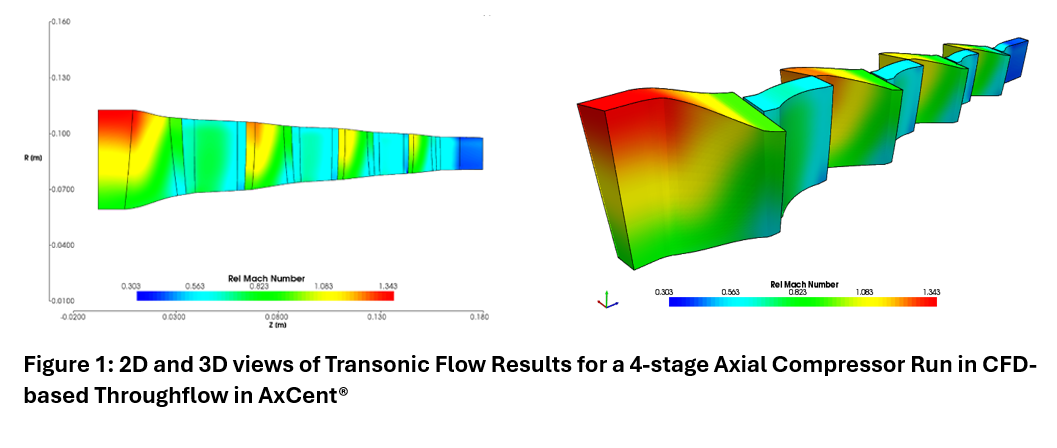Wow, Concepts NREC had a lot going on at this year's ASME Turbo Expo 2019 in Phoenix, AZ! We held our North American CAE User Group Meeting, spoke to over 200 people at our booth, chaired several sessions and presented two papers. In case you were not able to go, here are the abstracts from the two papers:
Meanline Modeling of Asymmetrical Twin-Scroll Turbine: Loss Coefficient Transferability Between Turbines of Different Sizes
Authors
Dr. Meng Soon Chiong -Senior Lecturer, Universiti Teknologi Malaysia
Dr. Srithar Rajoo - Associate Professor, Universiti Teknologi Malaysia (UTM)
Prof. Ricardo Martinez-Botas - Professor of Turbomachinery, Imperial College London
Mr. Torsten Palenschat - R&D engineer, Daimler AG
Dr. Peter Weitzman - President, Concepts NREC
Mr. Mark Anderson - Engineer, concepts NREC
Mr. Thiago Ebel - Senior Applications Engineer, Concepts NREC
The meanline modeling of asymmetrical twin-scroll turbocharger turbine performance has been in continuous development since its first introduction in 2008 by Daimler® AG. Asymmetric turbine features scrolls of different sizes to enable high pressure exhaust gas recirculation (EGR), which has been proven to be effective. However, the asymmetric feature of the scrolls has been identified as the major difficulty in the meanline modeling. This is particularly true at unequal-admission operating conditions, where the two volute scrolls are subjected to different magnitudes of pressure and mass flow rate. Tuning a meanline model for one particular turbine unit is usually possible, depending on the amount of flexibility in its loss sub-models. However the transferability of loss coefficients for the use of different turbine sizes has not been studied in the case of an asymmetrical twin-scroll turbine. The feasibility in doing so, and the consequences, difficulties and outcomes, will be presented in this paper.
The modeling work in this study will be carried out using commercial meanline tool – RITAL™ from Concepts NREC. The loss model is first tuned for the largest asymmetrical twin-scroll turbine in Daimler AG’s product line, at different admission conditions. After the model prediction has been validated with cold flow experimental data, the same loss coefficient settings are then used for performance prediction of a smaller asymmetrical twin scroll turbine. The finding of this paper suggests that the fraction of the volute flow exit area varies with turbine admission state. The variation trend exhibits a unique function of the turbine geometry, and found to be consistent across the turbine sizes. On the other hand, the rotor loss coefficient may remain constant regardless of the turbine operation. The goal of this study is to establish the confidence level for blind performance prediction in the future.
Using Optimization in Industrial Multi-Point Radial Compressor Design: Map Correction
Authors
Edward P. Childs - Concepts NREC
Dimitri Deserranno - Concepts NREC
Akshay Bagi - Concepts NREC
The application of Surrogate-Based Optimization (SBO) to the industrial design process for a radial compressor with two operating points is described. The design specification includes two operating points at mass flow rates differing by a factor of three, and efficiency and pressure ratio targets for each point. The base case, while roughly sized from 1D analysis, fails to achieve the pressure ratio targets. In this paper, the optimization focuses on correcting the two speed-line map of total to static pressure ratio vs. mass flow rate. “Smart parameterization”, combining independent and dependent geometric parameters, and yielding reasonable geometries for most input combinations, coupled with efficient SBO, with separate models for response surface modeling and failure prediction, yields a design achieving the targets in just 57 CFD runs.
FINE/Turbo is used as the CFD analysis code and FINE/Design3D and MINAMO as the multi-objective optimizer.
You will be able to purchase the full paper on the ASME website once they post them. If you have any questions about the topics, please contact us at info@conceptsnrec.com.





